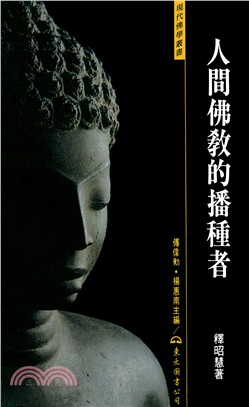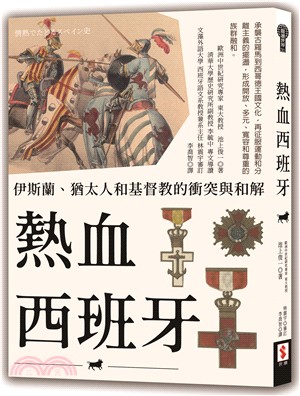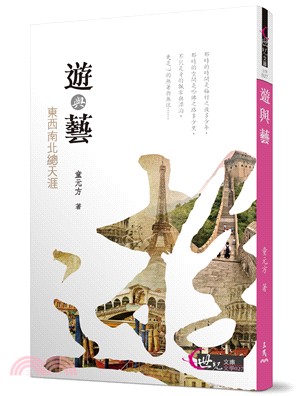Freeform Optics for LED Packages and Applications LED封裝與應用中的自由曲面光學技術(簡體書)
商品資訊
商品簡介
自由曲面光學是一新興的LED照明光學技術,其優勢在於具有較高的設計自由度和精確的光能量分佈控制,能夠提供一個實現高質量LED照明的有效的光學設計方法。
本書系統地介紹了一系列面向LED封裝與應用的自由曲面光學算法與設計方法,包括各類圓對稱自由曲面透鏡、非圓對稱自由曲面透鏡、自由曲面透鏡陣列優化等。同時,也包括了LED照明中各種先進的自由曲面光學設計應用與案例分析,包括光型可控的應用導向型LED封裝、LED室內照明、LED道路照明、LED直下式背光、LED汽車前大燈、LED微投影儀、高空間顏色均勻度自由曲面透鏡等。並且,在附錄中提供基本的自由曲面光學算法計算代碼供讀者參閱。本書中所介紹的大部分LED自由曲面光學算法和設計都得到了工業界的驗證,在具有學術價值外,同時也具有較高實用指導價值。
通過本書,讀者將對各種LED封裝與應用中的自由曲面光學技術有一個全面而深入的理解。同時,讀者還可以系統地學習到詳細的自由曲面光學算法與設計方法,便於提高獨自開發先進LED照明光學設計的能力。本書有利於加快LED封裝與應用的研發速度。此外,通過開放的算法代碼與案例分析,讀者將能夠更快更高效地掌握LED照明自由曲面光學的設計方法。
本書可供從事LED照明的研究人員、工程師、高校的研究生以及高年級的本科生參考。
作者簡介
王愷
廣東昭信光電科技有限公司,副總經理,工程師,王愷,2011年畢業於華中科技大學&武漢光電國家實驗室,獲工學博士學位,主要從事大功率LED先進封裝與應用技術研究,包括基於自由曲面光學的應導向型封裝ASLP、晶圓級封裝WLP、系統集成封裝SiP等。所研發的新型自由曲面光學算法以及應用導向型LED封裝為高質量LED照明提供了一套有效的光學解決方案,在LED封裝、背光、汽車前大燈、道路照明等領域得到成功應用,引起國際相關研究機構的關注(如Philips歐洲研究院、韓國LIFTRC研究中心等)。2009至2011年兼任廣東昭信光電科技有限公司研發主管一職。2011年至今擔任廣東昭信光電科技有限公司副總經理,負責新型LED封裝及特種照明應用產品的研發工作,包括高光效大功率LED(>150 lm/W)、高亮度車燈專用LED模組、低成本螢光粉保形塗覆技術、LED標準光元件等,具有將研究成果成功轉化為產品並盈利的產業經驗。
名人/編輯推薦
- 本書綜述了現有的主流自由曲面光學算法,進而引出並且系統介紹一系列新的針對LED照明的自由曲面光學算法,包括出自由曲面反射器、各類圓對稱自由曲面透鏡與非圓對稱自由曲面透鏡。大多數算法都得到了工業界的驗證。
- 本書從自由曲面光學新算法到詳盡的設計方法都做了詳盡的論述,同時也包括了先進的LED光學設計與新的案例分析。應用案例涉及:LED封裝與應用,包括集成自由曲面透鏡的應用導向型LED封裝、LED室內照明自由曲面光學、LED道路照明、大尺寸LED背光、LED汽車前大燈等領域。
- 本書系統地介紹許多LED照明自由曲面光學算法與設計,比如LED聚光燈的TIR自由曲面透鏡設計,LED路燈高空間顏色均勻度與高光能利用率的非對稱自由曲面透鏡設計,針對直下式大尺寸LED背光的應用導向型封裝集成花瓣式自由曲面透鏡設計,LED近光燈菲涅耳自由曲面透鏡設計,高空間顏色均勻度自由曲面透鏡設計等等。
- 本書在附錄中提供基本的自由曲面光學算法計算代碼供讀者參閱。
目次
Preface xi
1 Introduction 1
1.1 Overview of LED Lighting 1
1.2 Development Trends of LED Packaging and Applications 5
1.3 Three Key Issues of Optical Design of LED Lighting 7
1.3.1 System Luminous Efficiency 7
1.3.2 Controllable Light Pattern 7
1.3.3 Spatial Color Uniformity 8
1.4 Introduction of Freeform Optics 10
References 12
2 Review of Main Algorithms of Freeform Optics for LED Lighting 15
2.1 Introduction 15
2.2 Tailored Design Method 16
2.3 SMS Design Method 17
2.4 Light Energy Mapping Design Method 18
2.5 Generalized Functional Design Method 19
2.6 Design Method for Uniform Illumination with Multiple Sources 22
References 22
3 Basic Algorithms of Freeform Optics for LED Lighting 25
3.1 Introduction 25
3.2 Circularly Symmetrical Freeform Lens–Point Source 25
3.2.1 Freeform Lens for Large Emitting Angles 26
3.2.1.1 Step 1. Establish a Light Energy Mapping Relationship between the Light Source and Target 27
3.2.1.2 Step 2. Construct a Freeform Lens 31
3.2.1.3 Step 3. Validation and Optimization 33
3.2.2 TIR-Freeform Lens for Small Emitting Angle 33
3.2.3 Circularly Symmetrical Double Surfaces Freeform Lens 39
3.3 Circularly Symmetrical Freeform Lens – Extended Source 42
3.3.1 Step 1. Construction of a Point Source Freeform Lens 45
3.3.2 Step 2. Calculation of Feedback Optimization Ratios 45
3.3.3 Step 3. Grids Redivision of the Target Plane and Light Source 46
3.3.4 Step 4. Rebuild the Energy Relationship between the Light Source and Target Plane 46
3.3.5 Step 5. Construction of a Freeform Lens for an Extended Source 47
3.3.6 Step 6. Ray-Tracing Simulation and Feedback Reversing Optimization 47
3.4 Noncircularly Symmetrical Freeform Lens–Point Source 48
3.4.1 Discontinuous Freeform Lens Algorithm 49
3.4.1.1 Step 1. Establishment of a Light Energy Mapping Relationship 49
3.4.1.2 Step 2. Construction of the Lens 52
3.4.1.3 Step 3. Validation of Lens Design 55
3.4.2 Continuous Freeform Lens Algorithm 55
3.4.2.1 Radiate Grid Light Energy Mapping 57
3.4.2.2 Rectangular Grid Light Energy Mapping 58
3.5 Noncircularly Symmetrical Freeform Lens–Extended Source 60
3.5.1 Step 1. Establishment of the Light Energy Mapping Relationship 61
3.5.2 Step 2. Construction of a Freeform Lens 61
3.5.3 Step 3. Validation of Lens Design 62
3.6 Reversing the Design Method for Uniform Illumination of LED Arrays 63
3.6.1 Reversing the Design Method of LIDC for Uniform Illumination 64
3.6.2 Algorithm of a Freeform Lens for the Required LIDC 66
References 68
4 Application-Specific LED Package Integrated with a Freeform Lens 71
4.1 Application-Specific LED Package (ASLP) Design Concept 71
4.2 ASLP Single Module 72
4.2.1 Design Method of a Compact Freeform Lens 72
4.2.2 Design of the ASLP Module 73
4.2.2.1 Optical Modeling 73
4.2.2.2 Design of a Compact Freeform Lens 73
4.2.2.3 ASLP Module 74
4.2.3 Numerical Analyses and Tolerance Analyses 76
4.2.3.1 Numerical Simulation and Analyses 76
4.2.3.2 Tolerance Analyses 77
4.2.3.3 Experiments 81
4.3 ASLP Array Module 85
4.4 ASLP System Integrated with Multiple Functions 87
4.4.1 Optical Design 89
4.4.1.1 Problem Statement 89
4.4.1.2 Optical Modeling 89
4.4.1.3 Design of a Freeform Lens 90
4.4.1.4 Simulation of Lighting Performance 91
4.4.2 Thermal Management 91
4.4.3 ASLP Module 94
References 96
5 Freeform Optics for LED Indoor Lighting 99
5.1 Introduction 99
5.2 A Large-Emitting-Angle Freeform Lens with a Small LED Source 99
5.2.1 A Freeform Lens for a Philip Lumileds K2 LED 100
5.2.2 Freeform Lens for a CREE XLamp XR-E LED 103
5.3 A Large-Emitting-Angle Freeform Lens with an Extended Source 108
5.3.1 Target Plane Grids Optimization 108
5.3.2 Light Source Grids Optimization 108
5.3.3 Target Plane and Light Source Grids Coupling Optimization 109
5.4 A Small-Emitting-Angle Freeform Lens with a Small LED Source 110
5.5 A Double-Surface Freeform Lens for Uniform Illumination 113
5.5.1 Design Example 1 114
5.5.2 Design Example 2 115
5.5.3 Design Example 3 116
5.6 A Freeform Lens for Uniform Illumination of an LED High Bay Lamp Array 117
5.6.1 Design Concept 117
5.6.2 Design Case 118
5.6.2.1 Algorithms and Design Procedure 118
5.6.2.2 Optical Structures 119
5.6.2.3 Monte Carlo Optical Simulation 121
References 124
6 Freeform Optics for LED Road Lighting 125
6.1 Introduction 125
6.2 The Optical Design Concept of LED Road Lighting 126
6.2.1 Illuminance 127
6.2.2 Luminance 128
6.2.3 Glare RestrictionThreshold Increment 129
6.2.4 Surrounding Ratio 130
6.3 Discontinuous Freeform Lenses (DFLs) for LED Road Lighting 131
6.3.1 Design of DFLs for Rectangular Radiation Patterns 131
6.3.1.1 Step 1. Optical Modeling for an LED 131
6.3.1.2 Step 2. Freeform Lens Design 133
6.3.2 Simulation Illumination Performance and Tolerance Analyses 134
6.3.3 Experimental Analyses 139
6.3.4 Effects of Manufacturing Defects on the Lighting Performance 139
6.3.4.1 Surface Morphology 144
6.3.4.2 Optical Performance Testing 146
6.3.4.3 Analysis and Discussion 150
6.3.5 Case Study–LED Road Lamps Based on DFLs 152
6.4 Continuous Freeform Lens (CFL) for LED Road Lighting 154
6.4.1 CFL Based on the Radiate Grid MappingMethod 154
6.4.2 CFL Based on the Rectangular Grid MappingMethod 154
6.4.3 Spatial Color Uniformity Analyses of a Continuous Freeform Lens 158
6.5 Freeform Lens for an LED Road Lamp with Uniform Luminance 164
6.5.1 Problem Statement 164
6.5.2 Combined Design Method for Uniform Luminance in Road Lighting 166
6.5.3 Freeform Lens Design Method for Uniform-Luminance Road Lighting 171
6.6 Asymmetrical CFLs with a High Light Energy Utilization Ratio 174
6.7 Modularized LED Road Lamp Based on Freeform Optics 178
References 178
7 Freeform Optics for a Direct-Lit LED Backlighting Unit 181
7.1 Introduction 181
7.2 Optical Design Concept of a Direct-Lit LED BLU 183
7.3 Freeform Optics for Uniform Illumination with a Large DHR 186
7.4 Freeform Optics for Uniform Illumination with an Extended Source 191
7.4.1 Algorithm of a Freeform Lens for Uniform Illumination with an Extended Source 194
7.4.2 Design Method of a Freeform Lens for Extended Source Uniform Illumination 195
7.4.2.1 Step 1. Calculation of FORs 196
7.4.2.2 Step 2. Energy Grids Division for an Extended Source 197
7.4.2.3 Step 3. Construction of a Freeform Lens for an Extended Source 198
7.4.2.4 Step 4. Ray-Tracing Simulation and Circulation Feedback Optimization 198
7.4.3 Freeform Lenses for Direct-Lit BLUs with an Extended Source 198
7.5 Petal-Shaped Freeform Optics for High-System-Efficiency LED BLUs 203
7.5.1 Optical Co-design from the System Level of BLUs 203
7.5.2 Optimization of a High-Efficiency LIDC for BEFs 203
7.5.3 Petal-Shaped Freeform Lenses, and ASLPs for High-Efficiency BLUs 206
7.6 BEF-Adaptive Freeform Optics for High-System-Efficiency LED BLUs 210
7.6.1 Design Concept and Method 210
7.6.1.1 Step 1. Finding Out the Best Incident Angle Range 211
7.6.1.2 Step 2. Redistribution of Original Output LIDC 212
7.6.1.3 Step 3. Construction of a BEF-Adaptive Lens 213
7.6.2 BEF-Adaptive Lens Design Case 213
7.6.2.1 Basic Setup of a BLU 213
7.6.2.2 Design Results and Optical Validation 214
7.7 Freeform Optics for Uniform Illumination with Large DHR, Extended Source and Near Field 219
7.7.1 Design Method 220
7.7.1.1 IDF of Single Extended Source 220
7.7.1.2 IDF of Freeform Lens 221
7.7.1.3 Construction of Freeform Lens 222
7.7.1.4 Ray Tracing Simulation and Verification 223
7.7.2 Design Example 223
References 228
8 Freeform Optics for LED Automotive Headlamps 231
8.1 Introduction 231
8.2 Optical Regulations of Low-Beam and High-Beam Light 231
8.2.1 Low-Beam 231
8.2.2 High-Beam 232
8.2.3 Color Range 232
8.3 Application-Specific LED Packaging for Headlamps 234
8.3.1 Small étendue 234
8.3.2 High Luminance 235
8.3.3 Strip Shape Emitter with a Sharp Cutoff 236
8.3.4 Small Thermal Resistance of Packaging 236
8.3.5 ASLP Design Case 236
8.3.6 Types of LED Packaging Modules for Headlamps 238
8.4 Freeform Lens for High-Efficiency LED Headlamps 239
8.4.1 Introduction 239
8.4.2 Freeform Lens Design Methods 239
8.4.2.1 Design of Collection Optics 240
8.4.2.2 Design of Refraction Optics 241
8.4.3 Design Case of a Freeform Lens for Low-Beam and High-Beam 243
8.4.3.1 Design of a Low-Beam Lens 244
8.4.3.2 Design of a High-Beam Lens 246
8.4.4 Design Case of a Freeform Lens for a Low-Beam Headlamp Module 249
8.5 Freeform Optics Integrated PES for an LED Headlamp 250
8.6 Freeform Optics Integrated MR for an LED Headlamp 255
8.7 LED Headlamps Based on Both PES and MR Reflectors 260
8.8 LED Module Integrated with Low-Beam and High-Beam 263
References 266
9 Freeform Optics for Emerging LED Applications 269
9.1 Introduction 269
9.2 Total Internal Reflection (TIR)-Freeform Lens for an LED Pico-Projector 269
9.2.1 Introduction 269
9.2.2 Problem Statement 271
9.2.2.1 Defect of a Refracting Freeform Surface for Illumination with a Small Output Angle 271
9.2.2.2 Problem of an Extended Light Source 272
9.2.3 Integral Freeform Illumination Lens Design Based on an LED’s Light Source 273
9.2.3.1 Freeform TIR Lens Design 273
9.2.3.2 Top Surface Design of the TIR Lens 273
9.2.4 Optimization of the Integral Freeform Illumination Lens 279
9.2.5 Tolerance analysis 280
9.2.6 LED Pico-Projector Based on the Designed Freeform Lens 281
9.3 Freeform Lens Array Optical System for an LED Stage Light 283
9.3.1 Design of a One-Dimensional Beam Expander Based on a Freeform Lens Array 285
9.3.1.1 Part 1. Gridding of the One-Dimensional Target Plane 285
9.3.1.2 Part 2. Algorithm of a One-Dimensional Freeform Microstructure 285
9.3.1.3 Part 3. Optical Simulation Results of the Optical System 287
9.3.2 Design of a Rectangular Beam Expander Based on a Freeform Lens Array 287
9.3.2.1 Part 1. Algorithm of the Rectangular Freeform Structure 288
9.3.2.2 Part 2. Optical Simulation Results of the Optical System 291
9.4 Freeform Optics for a LED Airport Taxiway Light 291
9.4.1 Introduction 290
9.4.2 Requirement Statement 291
9.4.3 Design Method of an Optical System 291
9.4.4 Simulation and Optimization 293
9.4.5 Tolerance Analysis 294
9.4.6 Design of an LED Taxiway Centerline Lamp 295
9.5 Freeform Optics for LED Searchlights 297
9.5.1 Introduction 297
9.5.2 Freeform Lens Design of a Small Divergence Angle 298
9.5.3 Improving Methods and Tolerance Analysis 301
9.5.3.1 The Design of a Freeform Lens and Parabolic Reflector 301
9.5.3.2 Tolerance Analysis 304
References 305
10 Freeform Optics for LED Lighting with High Spatial Color Uniformity 307
10.1 Introduction 307
10.2 Optical Design Concept 308
10.3 Freeform Lens Integrated LED Module with a High SCU 309
10.3.1 Optical Design, Molding, and Simulation 309
10.3.2 Tolerance Analyses 312
10.3.3 Secondary Freeform Lens for a High SCU 313
10.3.4 Experimental Analyses 314
10.4 TIR-Freeform Lens Integrated LED Module with a High SCU 323
10.4.1 Introduction 323
10.4.2 Design Principle for a High SCU 325
10.4.3 Design Method of the Modified TIR-Freeform Lens 325
10.4.4 Optimization Results and Discussions 328
References 332
Appendix: Codes of Basic Algorithms of Freeform Optics for LED Lighting 335
Index 351
主題書展
更多書展本週66折
您曾經瀏覽過的商品
購物須知
大陸出版品因裝訂品質及貨運條件與台灣出版品落差甚大,除封面破損、內頁脫落等較嚴重的狀態,其餘商品將正常出貨。
特別提醒:部分書籍附贈之內容(如音頻mp3或影片dvd等)已無實體光碟提供,需以QR CODE 連結至當地網站註冊“並通過驗證程序”,方可下載使用。
無現貨庫存之簡體書,將向海外調貨:
海外有庫存之書籍,等候約45個工作天;
海外無庫存之書籍,平均作業時間約60個工作天,然不保證確定可調到貨,尚請見諒。
為了保護您的權益,「三民網路書店」提供會員七日商品鑑賞期(收到商品為起始日)。
若要辦理退貨,請在商品鑑賞期內寄回,且商品必須是全新狀態與完整包裝(商品、附件、發票、隨貨贈品等)否則恕不接受退貨。






















![漂鳥集[中英雙語版]](https://cdnec.sanmin.com.tw/product_images/957/957146403.jpg)

